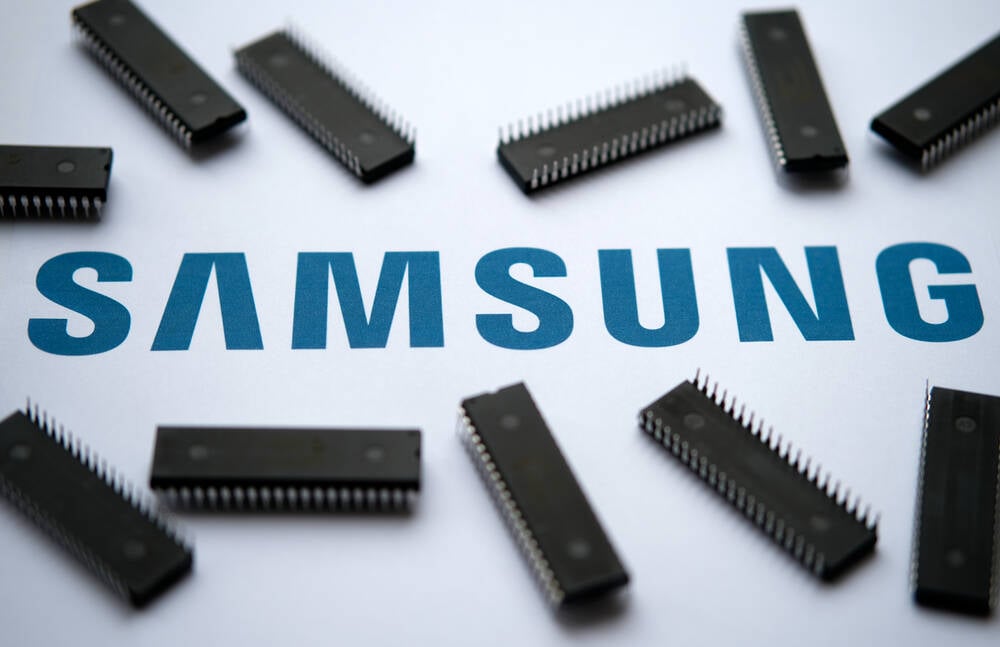Samsung's Results Hint It's Time To RAM Some Money Into Your Memory Budget

Samsung has posted another loss, but its semiconductor and memory business has shown signs of life, as inventories normalized and applications like AI drove demand for advanced products.
Samsung's revenue for Q3 2023, which ended in September, fell 12.2 percent from a year ago to KRW 67.4 trillion ($49.67 billion), a value that at least represented a 12.3 percent rise on the previous quarter.
Operating profit dropped a whopping 77.6 percent year-on-year to KRW 2.4 trillion ($1.77 billion), which again represented a quarter-on-quarter rise, this time to the tune of 13.2 percent. That growth was credited to strength in mobiles and display sales.
Memory sales also dipped: down 31 percent year-on-year, but up 17 percent quarter-on-quarter to KRW 1.53 trillion ($1.13 billion).
The chaebol credited the quarter's overall unremarkable performance to market uncertainties caused by "wars and geopolitical risks, gradual demand rebound and ongoing customer inventory adjustments."
However, when it came to memory, Samsung found [PDF] some upside, telling investors improved demand was driven by consumers adopting high-density PC and mobile products, despite poor demand for conventional servers. The end of customer inventory adjustments and emergence of AI-oriented products also helped drive the upwards bounce in memory movements.
In order to drive profitability during the quarter, the chaebol focused on expanding sales of advanced manufacturing nodes that deliver DDR5 and Universal Flash Storage 4.0, while reducing legacy products. That trend will continue into 2024 as Samsung plans to more than double its advanced AI chip production capacity.
- Get your cheap memory while growing stockpiles push prices low
- Don't get in a semiconductor 'doom spiral' – sector will be back with a bang in 2024
- Micron revenue halved in FY23 as China ban bites
- Samsung wants to push CAMM format into memory mainstream
"Overall, bit growth came in under guidance but the average selling price (ASP) of both DRAM and NAND saw some decent increases when compared to the previous quarter," revealed Samsung in a statement.
The company referred to the memory industry as overall "reaching a bottom" following industry-wide production cuts. The expectation is that the memory market will begin to recover now that excess inventory has been eliminated and more advanced and higher density products reach markets.
And with that bottoming out, it seems the price increases are also sticking around.
Executive vice president of memory, Jaejune Kim, expressed in the earnings call that there was a likelihood that price would continue to increase as the overall industry further recovers.
"Of course, that would depend on each product because the demand and supply situation would differ," said Kim.
Samsung expects fourth quarter demand to improve with year-end promotions, new product launches and strong demand for generative AI. In 2024, the spread of on-device AI is projected to provide "additional momentum" as server demand recovers gradually and high-density memory remains the trend.
Market intel company Trendforce has agreed with this assessment, pinning increases of Q4 contract prices for mobile DRAM at 13 to 18 percent. NAND Flash is expected to see a 10 to 15 percent increase for the same quarter.
Trendforce credited Samsung's production cut as a major contributor to the increases, combined with a surge in demand from the likes of Huawei as it debuts its Mate 60 series, and other smartphone players.
The upward price trend will continue into 1Q24, Trendforce predicted last week, with the rate of increase depending on "whether suppliers maintain a conservative production strategy and whether there is enough consumer demand to bolster the market."
Gartner has also forecast a memory market "bounce back with a vengeance" next year. And Intel last week also saw signs the CPU market will return to more regular buying patterns.
CPU prices don't fluctuate to the same degree as memory. Maybe it's time to reconsider what you'll spend on RAM and storage, and when. ®
From Chip War To Cloud War: The Next Frontier In Global Tech Competition
The global chip war, characterized by intense competition among nations and corporations for supremacy in semiconductor ... Read more
The High Stakes Of Tech Regulation: Security Risks And Market Dynamics
The influence of tech giants in the global economy continues to grow, raising crucial questions about how to balance sec... Read more
The Tyranny Of Instagram Interiors: Why It's Time To Break Free From Algorithm-Driven Aesthetics
Instagram has become a dominant force in shaping interior design trends, offering a seemingly endless stream of inspirat... Read more
The Data Crunch In AI: Strategies For Sustainability
Exploring solutions to the imminent exhaustion of internet data for AI training.As the artificial intelligence (AI) indu... Read more
Google Abandons Four-Year Effort To Remove Cookies From Chrome Browser
After four years of dedicated effort, Google has decided to abandon its plan to remove third-party cookies from its Chro... Read more
LinkedIn Embraces AI And Gamification To Drive User Engagement And Revenue
In an effort to tackle slowing revenue growth and enhance user engagement, LinkedIn is turning to artificial intelligenc... Read more

